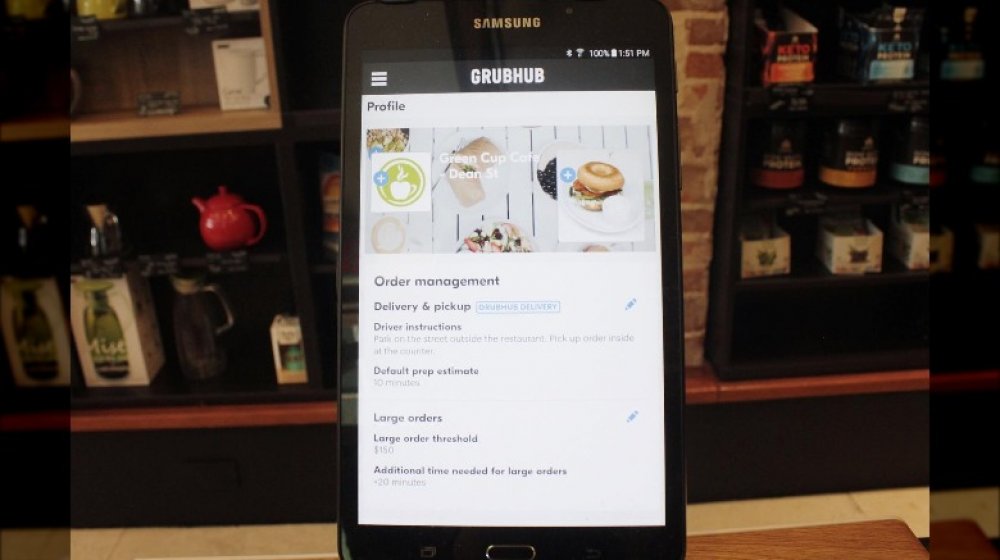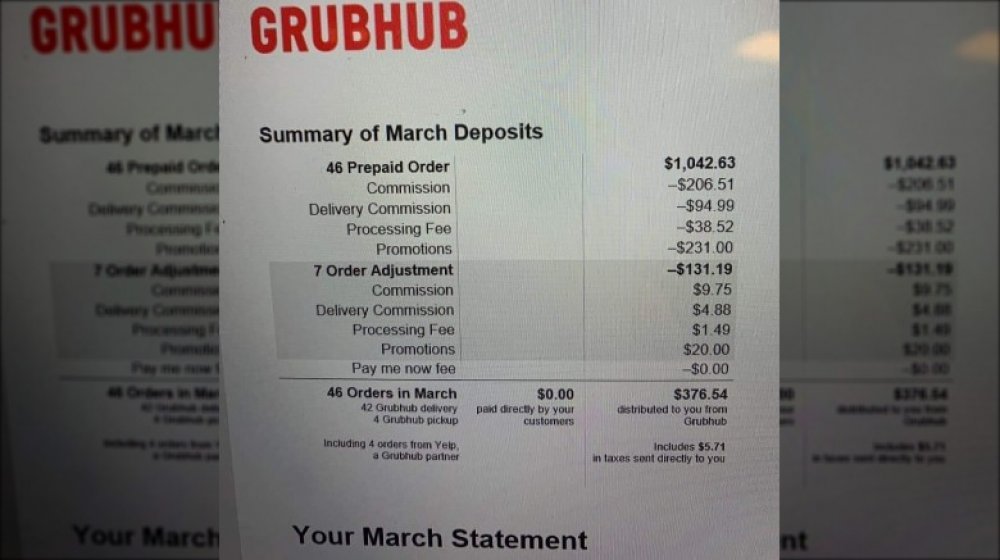Here's How Much Restaurants Really Make From Grubhub Orders
Ordering from Grubhub is certainly one of the great conveniences of modern living, allowing us the chance to virtually dine out at a wide variety of local restaurants instead of having to settle for pizza delivery on those nights when you don't feel like cooking, but can't be bothered to go out of the house. It does come with one major downside, however — it's just so darn expensive! Delivery fees here, service fees there, a nice tip, of course, and even the menu prices might be a bit higher than the ones you see in the restaurant. A recent New York Times investigation exposed the fact that a Grubhub order from Subway cost 25 percent more than just going and getting the food in-store — although this was, at least, a better deal than either DoorDash or Uber Eats offered, as these services marked up the same meal 46 percent and 91 percent, respectively.
Oh well, you sigh, at least all the money I'm spending is going to help support a local business, right? (Unless you've inadvertently ordered from Chuck E. Cheese, that is.) Wrong. A Chicago area restaurateur recently posted his March Grubhub statement on Facebook, and the results were eye-opening, to say the least (via Eater).
Grubhub took nearly two-thirds of this pizza maker's profits
Giuseppe Badalamenti, whose Facebook profile shows him to be the owner/operator of the Chicago Pizza Boss food truck, revealed the grim truth behind his Grubhub earnings: $1,042.63 worth of prepaid orders placed through Grubhub, but only $376.54 of that was actually received by his business. That's $666.09 (an appropriately evil number) going directly into Grubhub's greedy little mitts. One of the commenters, a restaurateur who has chosen not to work with the delivery service, also revealed that Grubhub was touting a promo where customers would receive $10 off an order supposedly as a feel-good incentive to support small businesses, but that those same small businesses were then forced to eat the $10 cost themselves, a fact which food writer Helen Rosner corroborated in a recent Tweet.
Mr. Badalamenti said that the pittance he received for filling those March orders wasn't even enough to cover the cost of the food he prepared, much less compensate him for any of his labor. As he expressed it, "Stop believing you are supporting your community by ordering from a 3rd party delivery company." Seems like the best thing to do, if you can't dine out, might just be to stay home and cook for yourself, since ordering from a delivery service, it turns out, isn't nearly as helpful for the restaurant industry as we'd hoped.

